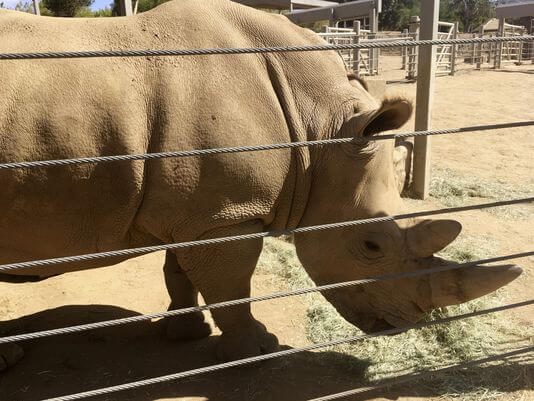

The good news is, Scientists may have just saved the northern white rhino from extinction. That means northern white rhinoceros are not extinct.

Quagga, we miss you.īe one of the few to see the the remaining seven northern white rhino, with a trip to Kenya.Are the northern white rhinoceros extinct? The answer is two white rhinos left. It seems that a combination of conservation effort, anti-poaching legislation and scientific brilliance, the world will never have to lose one of its precious species’ again. The following organisations have invested time, money, effort and have proved highly dedicated to restoring the northern white rhino: Oliver Ryder says: “The greatest contribution this technology might make is to prevent extinction by using stem cells to assist with rescuing the genetic variation in increasing the reproduction of a critically endangered species.” With the use of stem cell development it may be possible to produce the northern white rhino from a test tube.ĭirector of Genetics at San Diego Zoo's Institute for Conservation Research, Dr. However, with recent technology, it seems that all hope is not dead in losing the rare strain of the rhino’s gene. Northern White Rhino Stem Cell Development With reproduction of northern white rhinos coming to a halt, inter-crossing of the northern and southern species is planned by conservationists in order to ensure that the genes of the northern white rhino do not die with the last of their species. Although the rhinos have been mating since in Africa, there have not been any offspring which have resulted from intercourse. This behavioral change served to confirm that the four rhino had shed their non-procreational coexistence that they adopted while living in captivity and had now returned to the way nature intended it. Just over 15 months of being released into the central Kenyan highlands and the northern white rhino’s began ‘mating’ activities. Members of the European Association of Zoos and Aquaria stated that they didn’t think that “any significant conservation benefits will happen,” from the placement of the rhino back in the wild and in March 2011, they were almost correct. Many said that the operation would put the animals at risk because they had spent so long in protected conditions and they would not be used to the harsh African environment. The four rhinos were relocated back into the wild in hope of bringing about successful mating. While in captivity, the survival rate of northern white rhinos are good, but reproduction rates are extremely low. Moving them now is a last bid effort to save them and their gene pool from total extinction.” Said Dr Rob Brett, Africa Regional Director at Fauna & Flora International, and member of the IUCN African Rhino Specialist group.Ībove: The northern white rhino is categorised as ‘critically endangered’ by IUCN Red List. “They are listed as critically endangered on the IUCN Red List of Threatened Species and are thought to be extinct in the wild. On December 20, 2009, four of the last eight were moved from Dvur Králové Zoo in the Czech Republic to Ol Pejeta Conservancy in Laikipia, Kenya. Until 2009, the last eight northern white rhinos lived in two zoos in Europe and the USA. Northern White Rhino Moved From Czech to Kenya The white rhino can still be seen in the Kruger National Park. 2011 has seen the population reach an all-time low when one of the 8 last northern white rhino’s left, died of old age. After 2003, poaching shot up and in 2009 the population dwindled to 8 northern white rhinos left in the world. Managing to recover slightly, the population climbed to 25 in 1997 and went on to reach a peak of 32 in 2003. In the 1970s and 1980s the population dropped from 500 to 15 because of poaching. Graph Above: In 1960 the northern rhino population was over 2000. The reason for the decline in the population is attributed to hunting, poaching, and loss of habitat. Decline in the Northern White Rhino Population There are only 7 northern white rhino left in the world and conservationists are worried about the future reproduction of the world’s rarest large mammal.


 0 kommentar(er)
0 kommentar(er)
